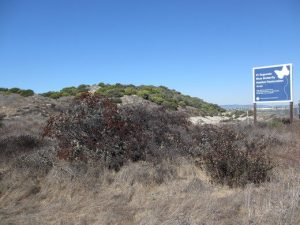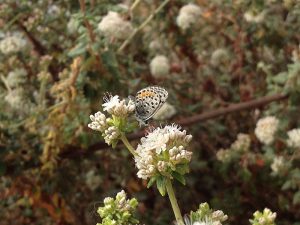El Segundo Blue (Euphilotes battoides allyni)
The El Segundo Blue butterfly is indigenous to a limited area of the El Segundo dunes encompassing about 3200 acres of land, located in California’s Los Angeles County.
Scientific Classification
- Family: Lycaenidae
- Genus: Euphilotes
- Scientific Name: Euphilotes battoides allyni
Description and Identification
Caterpillar
The larva or caterpillar goes through four instars prior to maturing into a pupa. When matured the larva is polymorphic, differing in color, from pure white to dull yellow. Some may even have a dull red or maroon body marked with white or yellow dashes.
Pupa
Not much details is available about the color and appearance of the pupa of these species, however, the pupa is formed at a leaf’s base and stays there for a while before developing into an adult.
Adult
Sexual Dimorphism: Present
Color and Appearance: When the wings are opened, they are bright blue with black spots and an orange band. When the wings are closed the light bluish hue is present, with rows of black dots on both sides. While males have a dark blue tinge above, the females are mostly brown.
Average Wingspan: 20 to 25 mm ( 0.8 – 1 in)
Flight Pattern:Not much is known
Eggs
They are laid upon the coast buckwheat flowers and hatch between three and five days.
Quick Facts | |
| Distribution | Los Angeles county from Palos Verdes peninsula in the north up to Ballona wetlands; they have also been spotted in California’s Santa Barbara county |
| Lifespan | Between 2 and 7 days |
| Habitat | El Segundos and dunes |
| Host plants | Eriogonum parvifolium |
| Adult diet | Wild buckwheat |
Did You Know
- They have attained the designation of endangered species since and just three colonies of this species remain at present.
- The El Segundo Blue Butterfly Reserve is situated adjacent to the LAX (Los Angeles International Airport for the purpose of preserving and protecting them.
- In certain beach cities close to where it inhabits the growth of ice plant has been replaced by that of coast buckwheat for providing nectar to these butterflies.


Scientific Classification

- Family: Lycaenidae
- Genus: Euphilotes
- Scientific Name: Euphilotes battoides allyni











